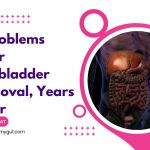A Doctor's Guide to Lowering Alkaline Phosphatase Levels (6 Tips)
Our content is not intended nor recommended as a substitute for medical advice by your doctor. Use for informational purposes only.
To understand when and how to lower alkaline phosphatase levels, you should know some important facts about the enzyme.
Alkaline phosphatase is one of your body’s enzymes in various tissues.
It is known as a marker of bile duct obstruction and bone diseases. However, alkaline phosphatase is present in a wide variety of tissues. Therefore, any disease or conditions affecting these tissues will cause arrangements in the enzyme.
Common locations of alkaline phosphatase in your body (reference):
- The biliary system and the liver cells.
- Bones.
- The Kidneys.
- The placenta (during pregnancy).
- Germinal tissues (testicles & ovaries).
- The gastrointestinal tract (mainly in the small intestine).
- It is also produced by certain cancer cells (such as lymphoma cells).
Before attempting to lower the alkaline phosphatase levels, your doctors will first ask two questions:
- First, does the alkaline phosphatase need to be lowered?
- What is the exact cause of its elevation?
The first question is important because the disease does not always cause alkaline phosphatase elevation. Physiological or benign conditions often cause many cases (see later).
The second question is even more important because the lowering of alkaline phosphatase essentially depends on the treatment of the cause of the elevation.
Today, we will discuss the most common causes of elevated alkaline phosphatase and how to lower them.
1. Excluding the physiological causes of alkaline phosphatase elevation.
The upper limit of normal alkaline phosphatase is about 121 U/L in adult men and women over 20 years of age (there are slight variations in the upper limit of normal between different laboratories).
However, the upper limits of normal alkaline phosphatase vary widely with age, chronic diseases (such as diabetes), pregnancy, etc.
Many conditions that lead to elevated alkaline phosphatase don’t need treatment because the rise is either normal for the condition (physiological) or benign (self-limiting).
So, before attempting to lower alkaline phosphatase levels, your doctor will first exclude the benign and physiological conditions of elevated alkaline phosphatase.
Common conditions of alkaline phosphatase that don’t necessarily require treatment:
A. Children and adolescents:
Children and young adolescents often have significantly higher levels of alkaline phosphatase levels. The elevations in alkaline phosphatase may reach four times the upper limit of normal or exceed it (reference).
The chart below shows that children and adolescents (0-16 years old) have significantly higher alkaline phosphatase than adults (the horizontal black line).
Bone growth is the cause of elevation in this age group. And they don’t require treatment to lower their levels.
B. Pregnant females (third trimesters).
The placenta is one of the sites of alkaline phosphatase. During the third trimester, the alkaline phosphatase levels may reach up to twice the upper limit of normal (up to 242 U/L).
No treatments are needed to lower alkaline phosphatase levels unless there is severe itching or elevations more than twice the upper of normal ( suspicious for another disease called intrahepatic cholestasis of pregnancy).
C. People with blood group (B) or (O).
People with blood groups (B) and (O) may experience a mild and benign elevation in alkaline phosphatase (reference).
The elevations are more noticeable after eating fatty meals. However, the elevations are often slight and don’t require treatment to lower alkaline phosphatase.
Your doctor often confirms the condition by testing for your blood group and repeating the alkaline phosphatase test while fasting.
D. Transient hyperphosphatasemia of infancy and early childhood.
Infants and toddlers (often between the ages of 6 months and two years) may experience extreme elevations in alkaline phosphatase (often more than 1000 U/L) (reference).
The rise is often discovered accidentally during routine testing(isolated marked rise in alkaline phosphatase).
The cause of such a condition is still not fully understood. And it is completely asymptomatic and not associated with other laboratory abnormalities.
Transient hyperphosphatasemia in infancy and early childhood is self-limiting within a few weeks or months; No treatment is needed to lower alkaline phosphatase levels.
D. Other conditions.
- Aging: People over 50 or 60 may have mild alkaline phosphatase elevations.
- During the period of healing from bone fractures.
- Benign postoperative cholestasis.
- Diabetes mellitus.
- Uncomplicated stomach ulcers.
2. Determine alkaline phosphatase elevation’s source (cause).
Determination of the exact cause is the first step in lowering its levels. Therefore, cause-specific treatments are the best way to lower alkaline phosphatase levels.
The table below summarizes the causes of moderate versus marked rise of alkaline phosphatase:
Causes of Marked ALP elevations (>600 U/L). | Causes of mild to moderate elevations (<600 U/L) |
| 1. Obstruction of the bile ducts by a gallstone. | 1. Bone growth (children & adolescents). |
| 2. Other causes of bile duct obstructions (cancers, strictures, infections). | 2. Pregnancy (third trimester). |
| 3. Liver disease leading to marked bile stasis inside the liver (intrahepatic cholestasis) – Toxin or Drug-induced cholestasis. – Primary biliary cholangitis. – Primary sclerosing cholangitis. – Metastatic cancer in the liver. – Infiltration of the liver with T.B., Sarcoidosis, etc. – Others. | 3. liver diseases causing mild cholestasis: – Hepatitis: alcoholic, viral, or chronic. – Liver Cirrhosis. – Early stages of the liver infiltrative disease. – decreased blood supply to the liver (hypoperfusion). |
| 4. Transient hyperphosphatemia of infancy and childhood. | 4. Bone diseases. |
| 5. Liver transplant rejection. | 5. People with blood groups O & B. |
| 6. Total Parentral Nutrition (TPN). | 6. Some types of cancer. |
| 7. Others such as thyroid diseases, diabetes, etc. |
Investigations that your doctor may require to determine the cause:
- Abdominal ultrasound, C.T., or MRI to visualize the liver and biliary tract.
- Bone x-ray, C.T., or bone density study defines any bone disease.
- Liver function tests and bilirubin levels to detect a biliary obstruction and liver diseases.
- Take full drug history to exclude medications that cause elevated alkaline phosphatase.
- If your doctor suspects cancer, he may perform a cancer screen (tumor markers, imaging, PET scan, lymph node biopsy, etc.).
- In isolated increase in alkaline phosphatase, a blood test called (gamma-glutamyl transferase or GGT) is valuable in differentiating hepatobiliary vs. non-hepatobiliary causes of elevated alkaline phosphatase.
3. Lowering elevated alkaline phosphatase due to biliary obstruction.
Obstruction of bile ducts that transfer bile from the liver to the intestine is one of the most common causes of marked elevations in alkaline phosphatase.
To lower alkaline phosphatase levels, your doctor will first determine the causes of obstruction. The block in the duct can be due to (reference):
- Gallstone stuck inside the bile duct.
- Cancers obstructing the bile track (such as cancer head of the pancreas, biliary cancer, etc.).
- Strictures (narrowing) of the bile duct due to inflammatory diseases, previous surgery, or bile duct trauma.
- Infections (such as Ascaris worm that may invade and obstruct the bile duct).
Best treatments to lower alkaline phosphatase in patients with biliary obstruction:
- Removal of the gallstones by a specialized type of endoscopy called (ERCP) is the most effective treatment to lower alkaline phosphatase.
- After removing the gallstones, your doctor will often plan for cholecystectomy to prevent the recurrence of the conditions.
- Inserting a stent inside the gallbladder (via ERCP) is a technique your doctor often uses with bile strictures, cancers, or infections.
- Avoiding fatty and heavy meals will help control the symptoms and elevations in bilirubin and alkaline phosphatase.
- A medication called (ursodeoxycholic acid) in selected diseases may help control the symptoms.
- Other medications that may help include milk thistle (silymarin), vitamin B complete, Vitamin K, vitamin C, etc.
- Antibiotics may also help in cases of bile infection (cholangitis).
4. Lowering alkaline phosphatase due to liver diseases (intrahepatic cholestasis).
Bile is formed inside the liver cells (hepatocytes) and then is collected via a network of small bile ducts inside the liver tissue (intrahepatic biliary ducts).
This network collects bile from the liver cells and releases it to the bigger bile ducts in the liver to drain bile into the duodenum.
Diseases that infiltrate the liver tissue extensively may cause bile stasis inside the liver by compressing or destructing the networks of small intrahepatic bile ducts.
Common diseases causing high alkaline phosphatase via intrahepatic cholestasis & how to treat)
A. Some toxins and drugs (drug-induced cholestasis).
Many drugs and toxins may cause alkaline phosphatase elevation by inducing bile stasis inside the liver.
The definitive treatment to lower alkaline phosphatase is identifying and discontinuing the offending drug. The full list of offending drugs is here.
B. Primary biliary cholangitis.
It is an autoimmune disease that causes itching, elevated liver enzymes, bilirubin, and alkaline phosphatase.
The main interventions to control the disease and lower alkaline phosphatase include Ursodeoxycholic acid (UDCA), obeticholic acid, Fibrates, and Budesonide (a corticosteroid). Learn more.
C. Primary sclerosing cholangitis.
Another autoimmune disease that destroys the bile ducts.
Treatments to control the disease and to lower alkaline phosphatase include:
- Bile acid sequestrants (such as cholestyramine).
- Antibiotics such as rifampin reduce itching.
- Ursodeoxycholic acid.
- Others such as antihistaminics, opioids, etc.
- Severe cases may need balloon dilatation or insertion of a stent inside the bile duct.
Learn more.
D. Other treatments to lower alkaline phosphatase:
- Chemotherapy and or liver surgery for liver tumors.
- Treatment of infections (such as T.B. and liver abscess).
- Avoidance of alcohol (causes severe alcholic hepatitis and elevated alkaline phosphatase).
5. How to lower alkaline phosphatase due to bone diseases.
The treatment depends on the cause of elevation in alkaline phosphatase.
Some common causes of bone diseases that cause elevated alkaline phosphatase and how to lower it:
A. Osteomalacia (mainly due to vitamin D deficiency).
The deficiency of vitamin D leads to impairment of bone health and muscle weakness. In addition, it is one of the most common causes of mildly elevated alkaline phosphatase.
Effective treatments for osteomalacia to lower alkaline phosphatase:
- Vitamin D supplementation.
- Others may need calcium or phosphate supplements.
- Adequate exposure to sunlight.
- Eating calcium and vitamin D-rich foods such as milk and dairy products.
Learn more about the best treatments for osteomalacia.
B. Hyperparathyroidism.
The parathyroid glands release a hormone called (parathyroid hormone or PTH). Increased PTH levels (mainly due to benign tumors and kidney diseases) lead to elevated calcium levels and bone lysis (mobilize calcium from bone to blood).
Hyperparathyroidism is one of the common causes of elevated alkaline phosphatase.
To lower the levels of alkaline phosphatase, your doctor may:
- First, remove the parathyroid glands (especially in parathyroid adenoma). It is the most effective way to control the disease.
- Other treatments include vitamin D supplementation, calcium, calcium-mimicking medications, etc.
C. Hyperthyroidism.
Hyperthyroidism causes high alkaline phosphatase by inducing bone turnover (breakdown). The treatment of hyperparathyroidism to lower ALP levels includes:
- Medications such as carbimazole and beta-blockers.
- Partial or complete removal of the gland in severe cases.
D. Bone cancer.
Bone cancers (either primary or metastatic) cause a significant rise in alkaline phosphatase.
Treatment options include:
- Surgery to remove the malignant masses.
- Chemotherapy.
- Radiotherapy.
- Bone-building medications such as calcium and vitamin D.
MORE: 7 Causes of Slightly Elevated Alkaline Phosphatase (160, 170, 180, 200 U/L, etc.)
- Evidence-based
- Written by a doctor.

Related Posts:
- 15 Nausea Causes (A Comprehensive Guide by GI Doctor)
- Colon Prep: A comprehensive Doctor’s Guide (with…
- IBS or Colon Cancer: In-depth Guide to Differences…
- Lipase levels 101: Normal Range, Elevated, Low Levels & More
- Impacted Stool: Treatments & Best Laxative, A…
- IBS pain relief: 8 Most Effective Tips From A Doctor…






